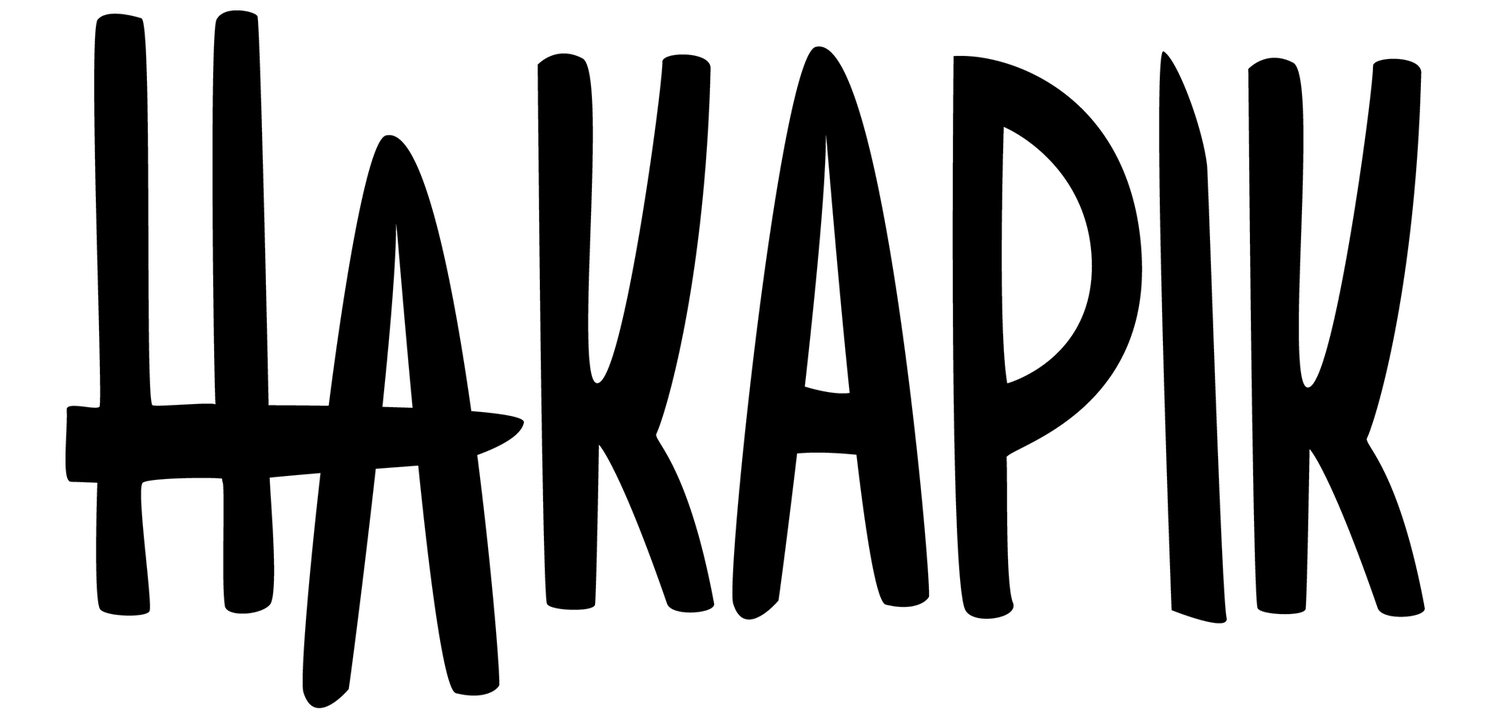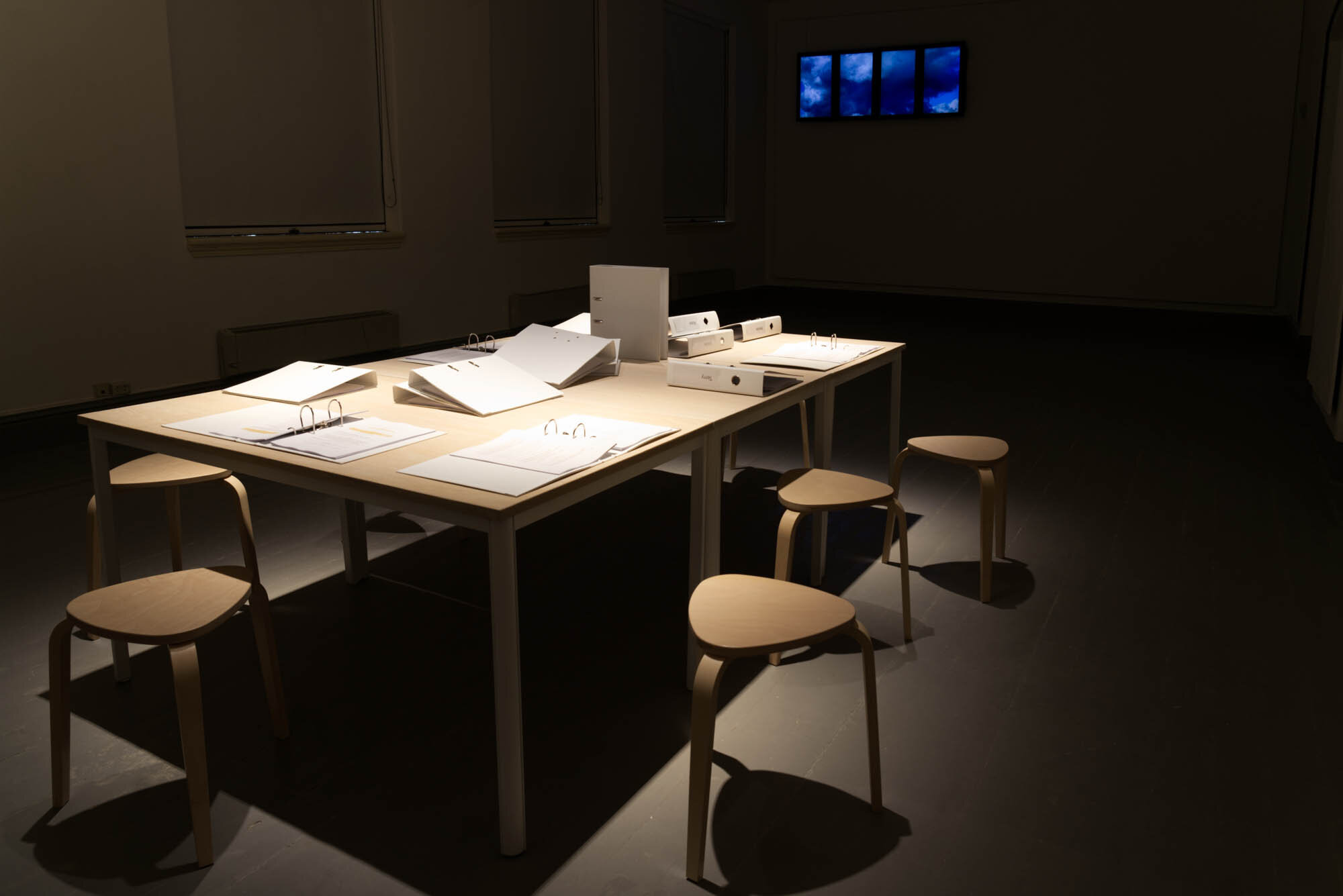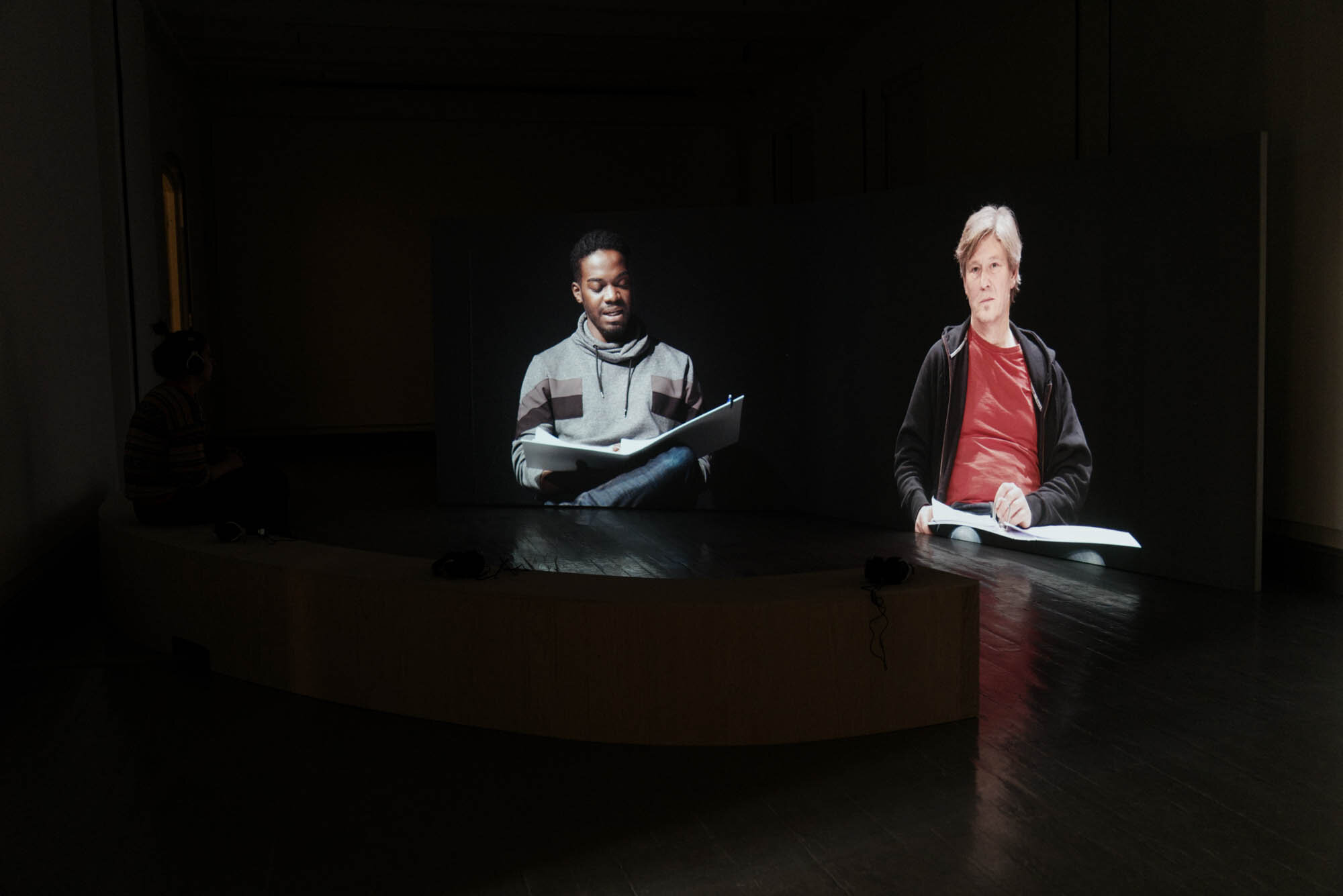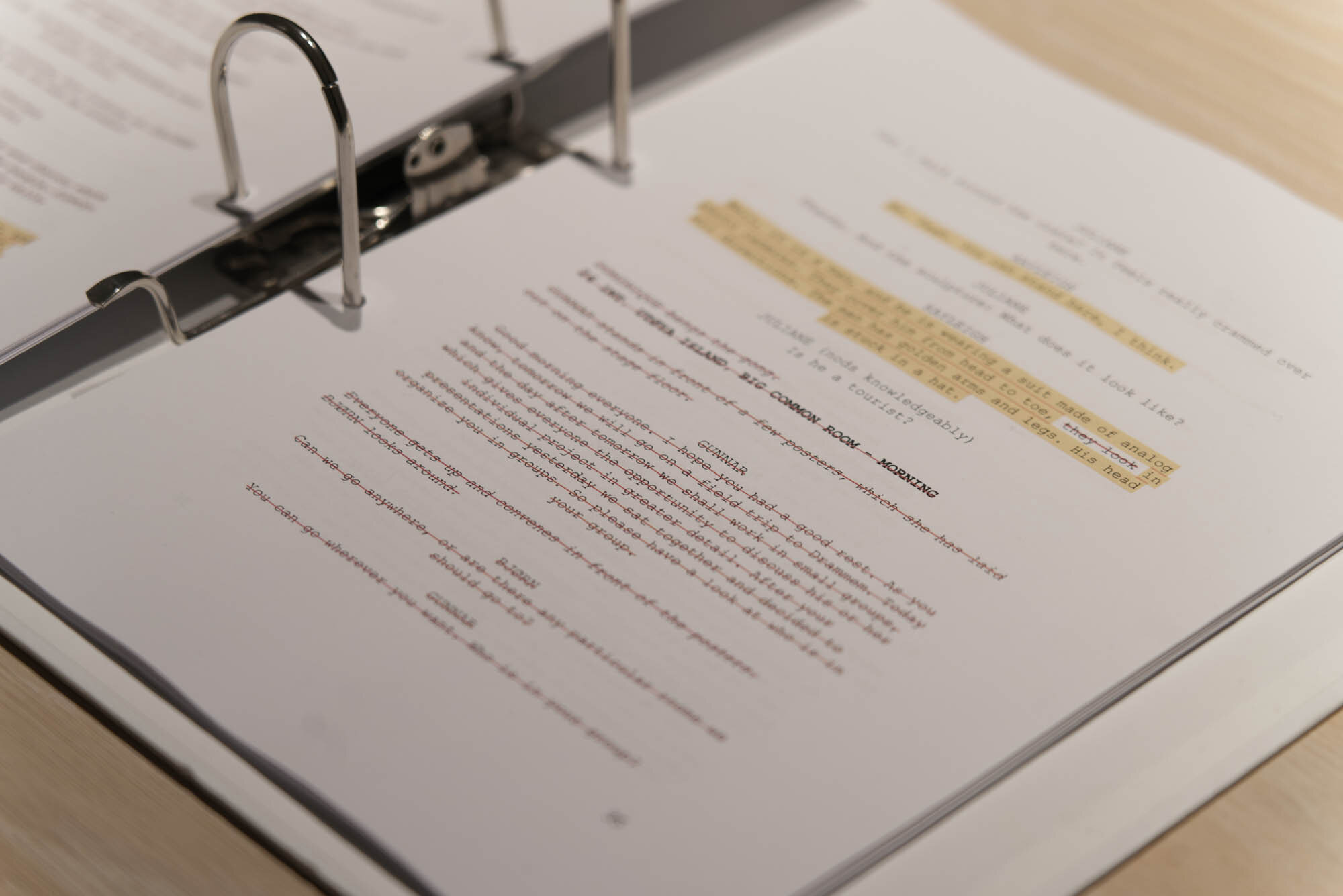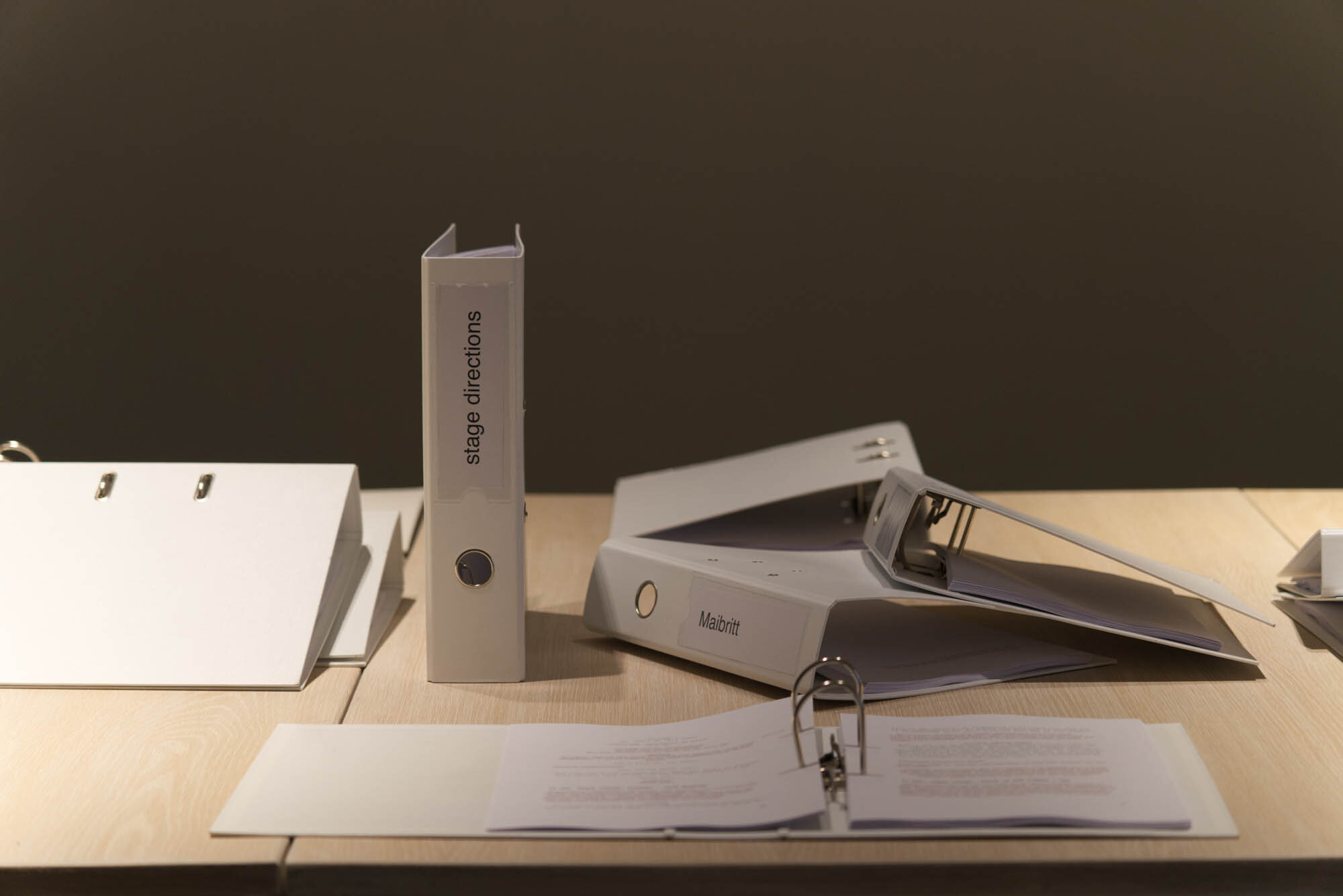A Chorus of Many Truths
Review of the exhibition Reading out loud – Juliane Zelwies, Tromsø Kunstforening, 12.03 – 18.04.2021.
Written by Marion Bouvier
All photos by Tromsø Kunstforening / Vsevolod Kovalevskij.
«Reading out loud», or reading to hear one’s own story from an outsider’s perspective. Using film installation and script writing as her medium, Juliane Zelwies attempts to explore the construction and deconstruction of narratives. Underneath it all lies the question of whether there is one universal truth, or whether there can only be as many truths as there are individuals.
The exhibition is composed of two rooms and presents works by Juliane Zelwies, who is an artistic research fellow at the Academy of Art, The Arctic University of Norway and The University of Bergen. In the first one, binders containing scripts and labeled with different character names are scattered on a large table; on the far wall, the video installation «The Cloud» (2021) consisting of four screens, plays a looped video of changing skies. In the second room, a semi-circular wooden bench invites the viewer to sit facing the two-channel video installation, where the eponymous video, Reading out loud (2021) is playing on loop.
An art seminar gone adrift
The film shows a group of readers sitting down reading from the same script as the one scattered on the tables in the first room. The story we are told is about an art symposium, situated at Utøya, where a group of artistic researchers is gathered to discuss their artistic practices. During the seminar an unexpected happening brings about an irreconcilable rift amongst its participants. This happens when a performance artist accuses everyone of racism, leaving the rest of the group to wonder whether the accusation was real or part of a performative experiment.
The “readers” are placed on a stage that is visibly a theater stage. They frequently look into the camera while reading the script, breaking the fourth wall and reminding us that this is not a film, and forcing us to keep a critical distance to the material. The readers are not actors, they do not wear costumes nor do they act while reading.
As we listen to the story unfolding, we do get to feel the effect Utøya has on the participants of the seminar, how its unspoken presence pervades their mental space. We also feel the subtle ways in which artists interact both as a community and as individual people with one another, which is an essential aspect of Zelwies’s Ph.D-research. In a revealing reminder of her interest in artists communities, Zelwies also chose her readers from the local community of artists and cultural workers of Tromsø. As they read about the small community that formed and broke during the seminar on Utøya, it is almost like the two groups – one in Tromsø, one on Utøya – speak to each other. But one group does not get to reply, and a discussion never comes to being, just like no conversation could take place after the performance artist staged his coup: Zelwies indeed mentioned in her artist talk that the performance artist who staged the «coup» during the seminar refused to further address the events afterwards. As all the participants went back to their respective cities, Zelwies was left only with her own memories of what had happened.
Truth as a collection of gathered memories
Yet, Reading out loud is not about Utøya, nor is it about this particular seminar. It’s about subjectivity, the profound uniqueness of experience, and human connection despite and through the chasms of subjective narratives. It is the story of the artist’s recollection of the seminar. It’s her memory of it, staged and read, by strangers.
In a guided tour of the exhibition, Juliane Zelwies mentioned that some of the other participants to the seminar were angered when reading her script, saying that she remembered wrong, that this was not how things had taken place. Other real-life participants didn’t have such strong feelings or were even amused by the work.
I am reading Melissa Febos’s Abandon Me (2017) at the same time as I’m writing this review. Parts of the book are about the author’s relationship with her father, and she writes; «When he reads this he will blanch at my inaccuracies. (…) But there is no one true version of any story. Some parts we share and some are ours alone. Here is mine.» I can imagine Zelwies’s seminar colleagues «blanching at (her) inaccuracies,» as she recalled their words differently than what they remembered saying. Time probably also added a layer of inaccuracy, as memories fade and the brain recreates part of the story to fit one’s narrative.
A deeply personal work
Juliane Zelwies’s story is hers only, and co-exists with as many stories as there were participants to the seminar she depicts. Together they form the mosaic that is the closest to objective truth. Like archeologists discovering remnants of the past, we only get to observe and analyse a piece of the whole. We will never have before our eyes the complexity of the scene as it played out in the past, but we get to bring our own story into the picture, through interpreting and imagining the rest of the story. From audience, either reading the scripts on the table or sitting on the semi-circular benches facing the readers on the two screens – as if we’re part of their reading circle, we become actors in Zelwies’s drama. And from actor in her real-life drama, Zelwies becomes her own story’s viewer.
And that is precisely what is so interesting about Reading out loud. In the fragments of the artist’s recollections, we side with her as she tries to establish connections with her fellow artists, feels closeness and loneliness as people come in and out of her sight. In that sense, Reading out loud feels like a deeply personal work, much more than the rather austere form of the exhibition could let us think when first entering the gallery space. The only thing I missed is a reflection around actual racism in art circles and society. It is impossible to understand from the work whether the accusation of racism was grounded in reality or not, and although that episode forms the dynamic crux of the work, the topic of racism itself quickly fades away.




